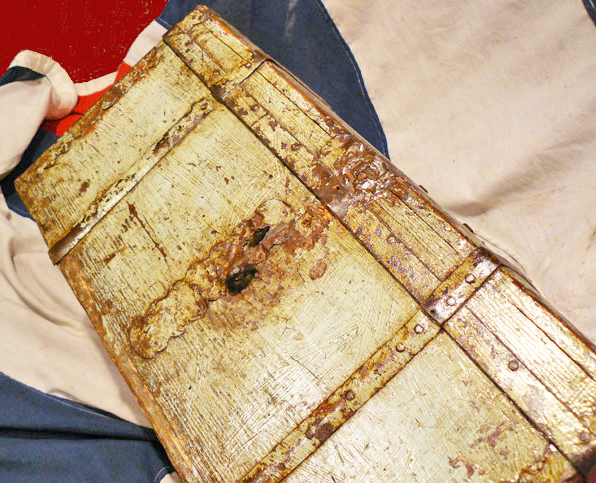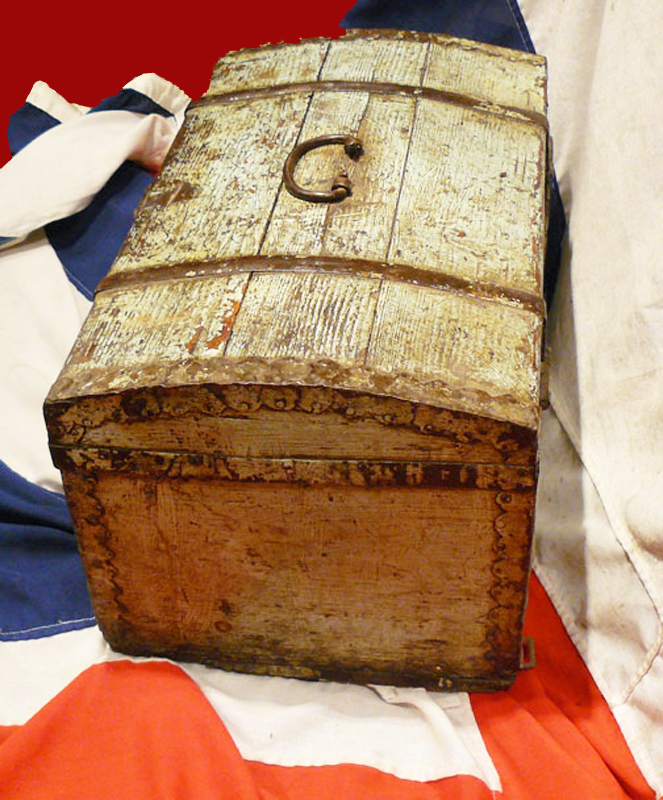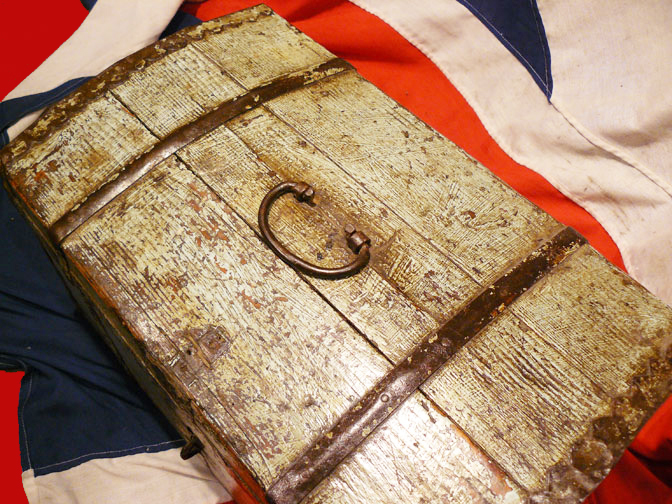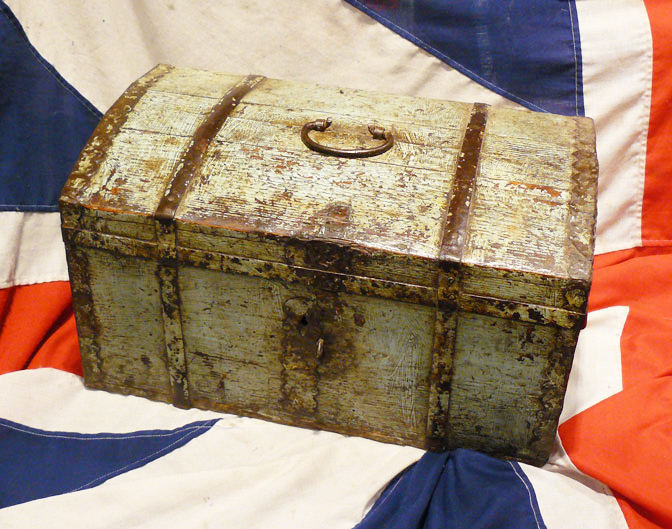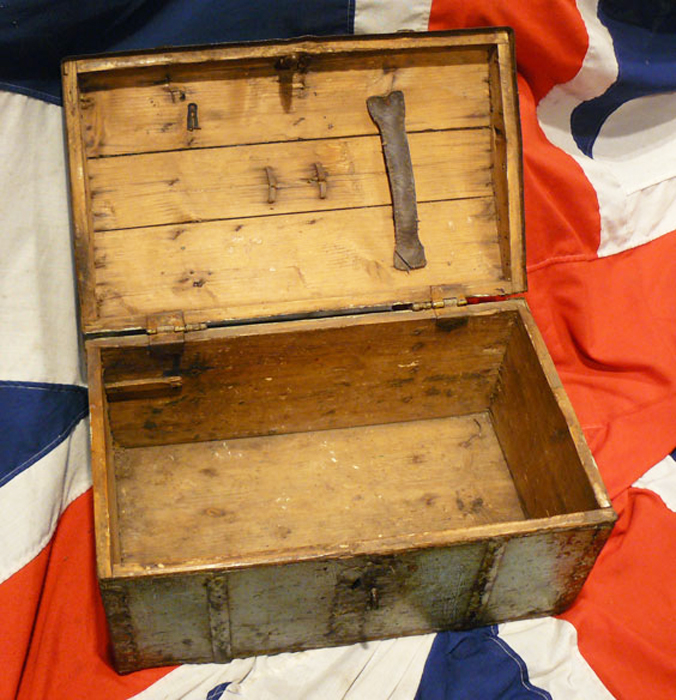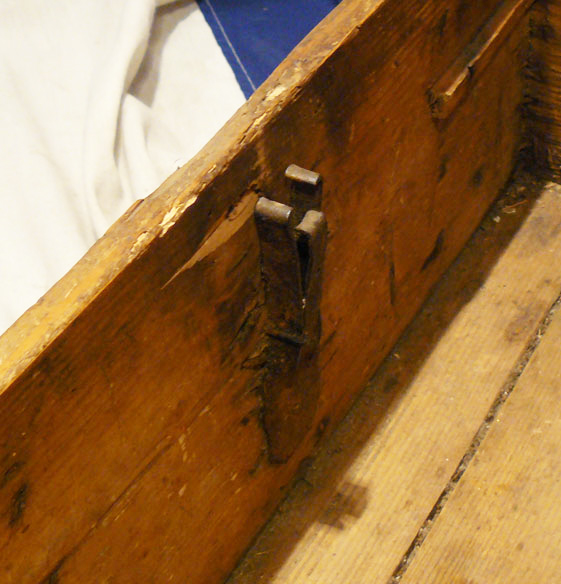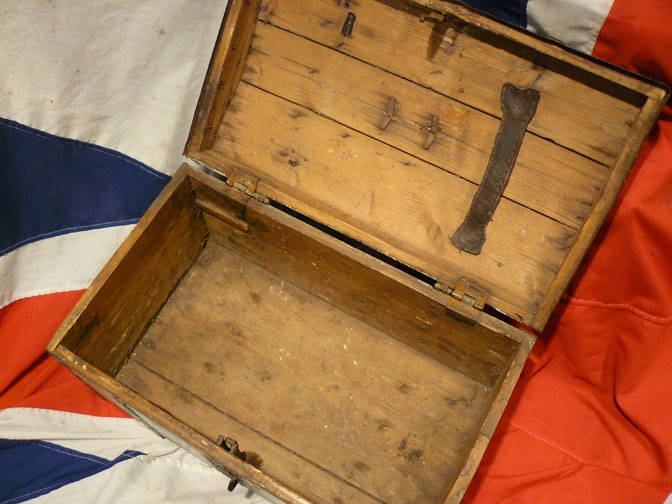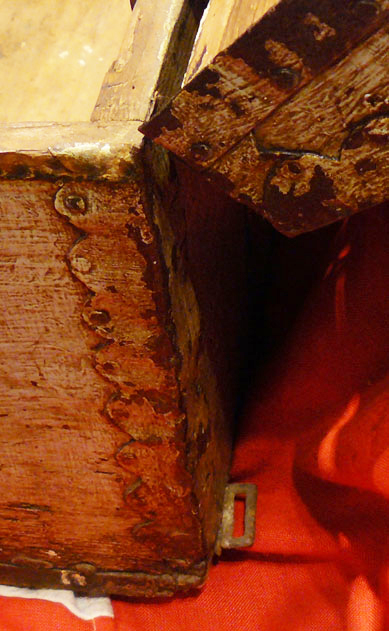Super 1850's 'Crimean War' Russian Military Officer's Campaign Trunk
A wooden and steel strap banded military officer's campaign trunk from the Crimean war. Painted in faded pale Russian blue-grey. From family history, it was been used by an officer of the 17th Lancers after he acquired it from various kit and officers campaign equipment captured from a Russian baggage train in 1854 around Balaklava. The British officer then used it for his gun case and military kit during his campaign in the crimean, and later by his sons. Campaign furniture is an umbrella term for the portable items of furniture used by the military in the eighteenth, nineteenth and early twentieth centuries. It is comprised of a huge number of objects, from chairs to chests, wardrobes to washstands and games tables to camp beds. A number of celebrated British furniture makers created pieces of campaign furniture, elevating it beyond its roots in functional, army-based design to desirable, collectible decor that continues to add a beautiful, innovative touch to homes today. The Crimean War started with Russia's invasion of the Turkish Danubian principalities of Moldavia and Wallachia (now Romania). Britain and France both wanted to prop up the ailing Ottoman Empire and resist Russian expansionism in the Near East.
Although Russia fought a largely successful war against the Turks in Armenia, and British and French fleets operated in the Baltic Sea, it was the events in the Crimea that had the biggest impact on Britain. In September 1854 the allies landed troops in Russian Crimea, on the north shore of the Black Sea, and began a yearlong siege of the Russian fortress of Sevastopol. Major engagements were fought at the Alma River on September 20, at Balaklava on October 25 (commemorated in ?The Charge of the Light Brigade? by English poet Alfred, Lord Tennyson), and at Inkerman on November 5. On January 26, 1855, Sardinia-Piedmont entered the war and sent 10,000 troops. Finally, on September 11, 1855, three days after a successful French assault on the Malakhov, a major strongpoint in the Russian defenses, the Russians blew up the forts, sank the ships, and evacuated Sevastopol. Secondary operations of the war were conducted in the Caucasus and in the Baltic Sea. The last picture shows the bottom rear strap loops for mounting the trunk on the rear of a horse drawn baggage coach. 13 inches deep x 21.5 inches wide x 11.5 inches high.
Code: 22604
675.00 GBP



